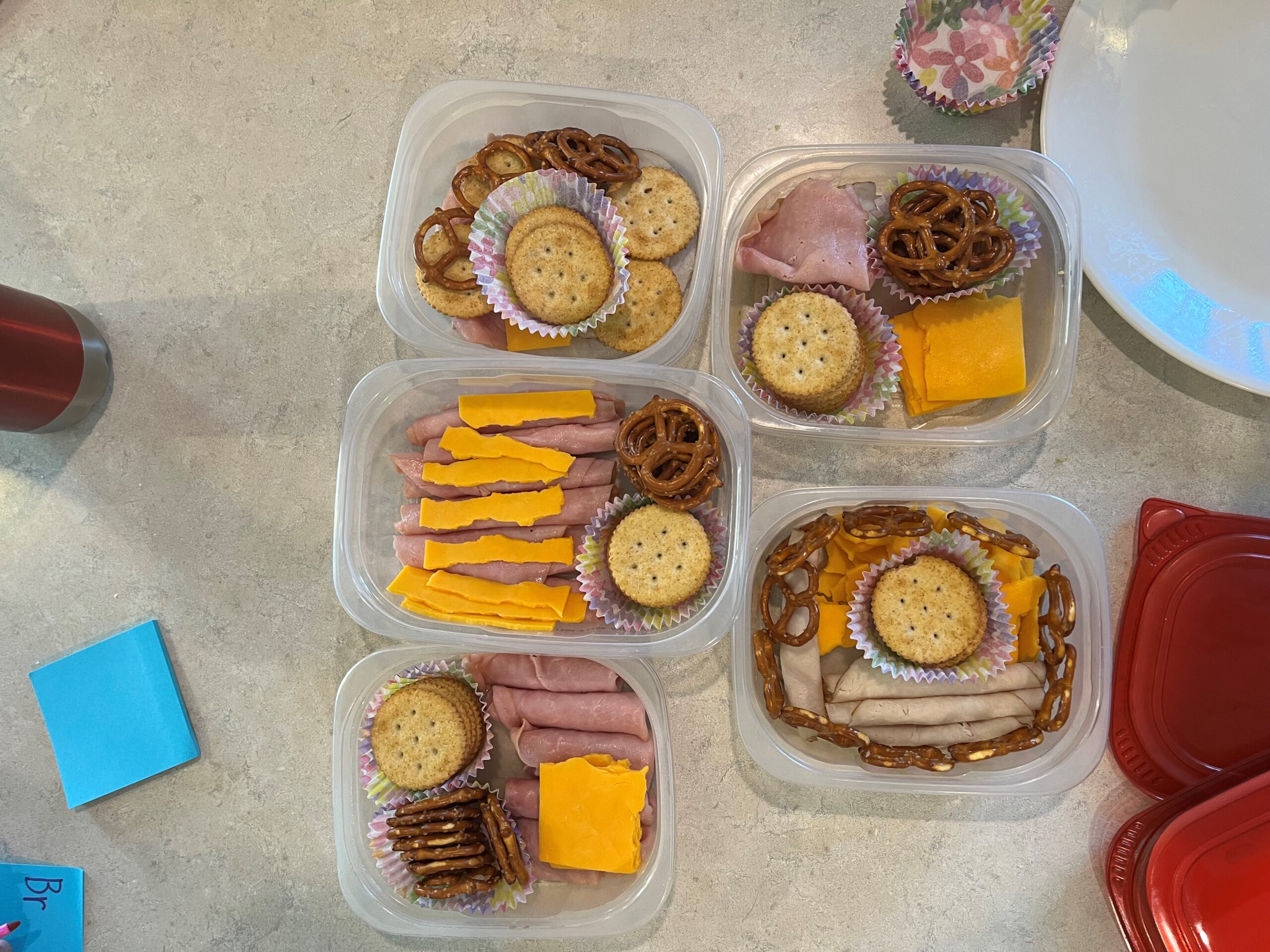Over the next few weeks, I am going to be sharing how I began changing some of our family habits, particularly around food, many years ago when the kids were little. As the kids have gotten older and as I have learned more about nutrition, some of my thoughts and practices have changed a bit. The biggest thing that I want you to take away from this is that every family is different. What works for one family may not be what works for another. As parents, you have food preferences that are influenced by how you were raised, your family’s approach to food and meals, things you have learned or experienced with food as you have become an adult, as well as social pressure from friends and media. Additionally, each family has their own unique set of health risk factors and predispositions that they may be trying to manage. Finally, socioeconomic factors play a HUGE role in what we choose to feed our families.
I will admit that when my kids were young, I let them have too many fruit snacks. I somehow thought this was better than other snack foods they could be eating. It was also something that they only got when we were out of the house so wasn’t a regular part of their diet. What I gradually realized was that while some brands may be made with 100% fruit/vegetable juice or were “low” in sugar, they didn’t have any real nutrition. This is when my thought pattern changed to focusing on feeding my family foods with nutrition rather than just empty calories. I began making small switches in our foods—whole grain pasta, bread, pancake mix, making cookies with ½ whole wheat flour, and sometimes sneaking pureed veggies into pasta sauces. One thing I had always done was give them Jello, pudding, or hot chocolate that was sugar free. They probably never had those things with sugar until they were well into elementary school. Snacks after school had never consisted of junk food. It was always a fruit, veggies, or whole grain crackers with a protein. Those were things that were just wired into me and never something I questioned.
We all know that there is SOOO much nutrition information out there and figuring out what to believe or follow can be really difficult. When I started working on a childhood obesity prevention program for the hospital I worked at, I began looking at the research that was going on into pediatric nutrition, changes being made in school lunches, and learning more from reliable sources doing research in these fields. Some of the things I learned are counter to the popular, attention-grabbing programs being promoted everywhere. I read research studies, reports from organizations such as The Robert Wood Johnson Foundation, joined so many committees of local and state stakeholders supporting ways to improve nutrition for ALL children and ALL families. I worked with dieticians both at the hospital and at Iowa State University to learn more about what the latest advances in child nutrition were and what they were recommending. What I learned can be boiled down to a few simple things although if you really want to get into the weeds on this, there are many more details you can learn about.
So here it is. Julia’s Basic Thoughts on Nutrition
- Look for food that has nutrition as much as you can, but leave room for some “fun” things as well.
- Less fat generally means added sugar. Fats add richness and flavor to foods so eliminating them means manufacturers need to add something to make the food taste good. What they add is sugar.
- Portion sizes matter. Not only do you not want oversized portions, but make sure you and your family are eating enough. If kids aren’t getting full servings, they are going to be hungry and then be overeating on snacks both healthy and not-so-healthy.
- Organic does not mean zero pesticides/herbicides/fungicides. Those things are still used in organic food production but must be approved by the USDA to be used in organic farming. Organic food has the same nutrition as conventionally grown food. It’s up to you if you want to spend the extra money on it.
- Don’t eliminate food groups unless you have an allergy or intolerance. All food groups have essential nutrition. If you must eliminate something, find out what other foods will provide you with those nutrients and be sure you are getting enough of those or taking supplements.
- Keto/Paleo/Low-carb work for some people and not for others. They should not be used with kids unless specifically recommended by a doctor or dietician and supervised by them.
- Don’t make mealtimes a battle. Take Ellyn Satter’s advice: A parent’s job is to determine what and when a child eats. The child’s job is to determine if and how much they eat. (Ellyn Satter is a dietician who developed that Satter Feeding Dynamics Model.)
- Make one meal. Include a couple items that your children are sure to eat. Don’t make separate meals for people.
- Minimize your sugar intake and limit those artificial sweeteners while you’re at it.
- Food should be enjoyable and nourishing, not something to feel guilty about or feel superior about. Your worth is not measured by the foods you eat or serve your family.
I will be talking more about each of these points in future blog posts and going into those weeds and details a bit. Please message me with any questions you have or anything that you would like me to talk more about.
Peace from The Edge,
Julia


1 Comment